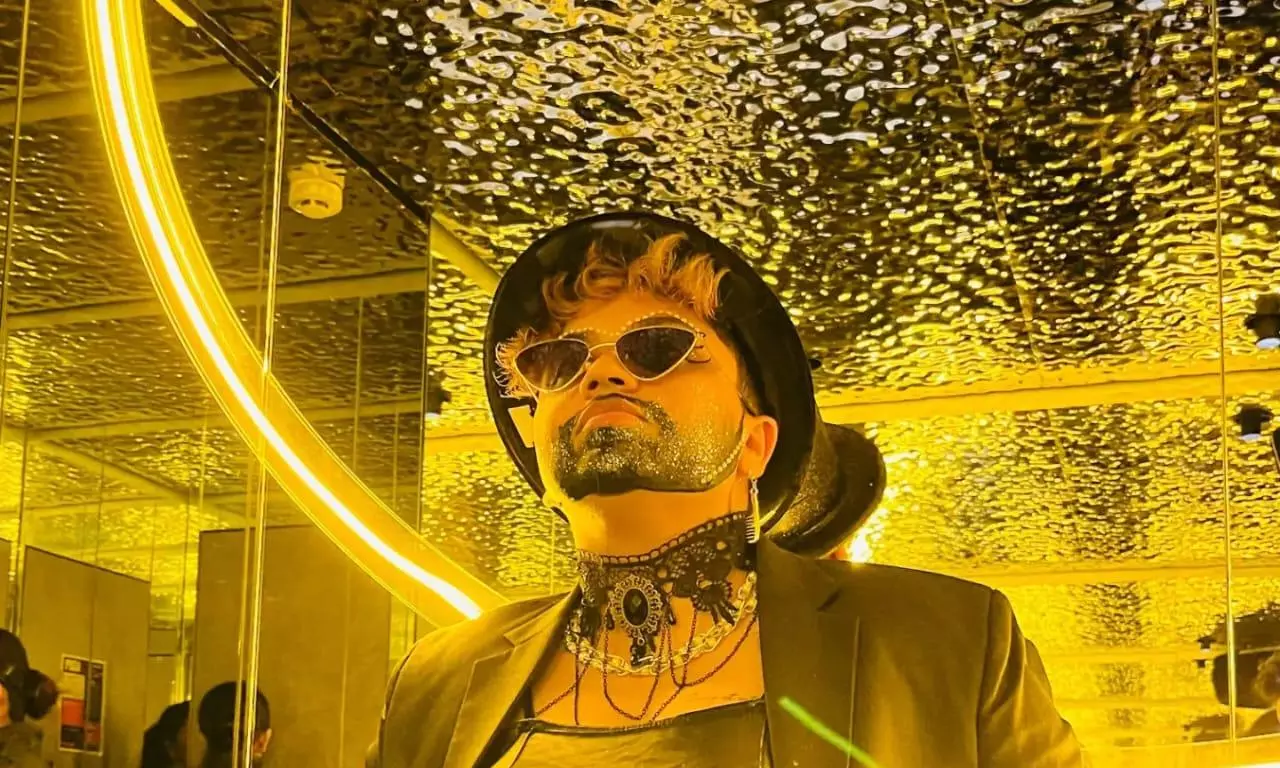Halloween Night Lends Space for Drag Events

Hyderabad: Not just a night. Not just a costume. Not just a performance. During this year’s Halloween week, the drag events lined up across the city are becoming a medium to reclaim a night meant for disguise and fantasy into one of honest, unfiltered self-expression for artists who might otherwise remain unseen.
Halloween is celebrated on October 31.
A drag artist is a performer using exaggerated gender expression to explore and express identity and culture. Its roots historically lie in theatre and have evolved into the modern drag performance commonly seen today within the LGBTQIA+ community.
“It was on a Halloween night that I first felt able to embrace my drag, affirming it to myself,” says drag artist Patruni Chidananda Sastry, adding, “I hadn’t come out about my sexuality, and I was working at a software company here. We had to dress up, and for once, it felt safe to do so.”
Sastry, a familiar face in Hyderabad’s drag scene, is not only a performer but also one of the organisers behind this year’s events. Having curated Halloween spaces over the last six or seven years, Sastry observed a noticeable increase in drag events this year. “There are at least three drag events this week, which is quite a large number for Hyderabad,” Sastry added.
While Hyderabad’s drag culture is still emerging, it’s worth recalling that Halloween became a night for queer expression and drag performance during the LGBTQ+ liberation movement in the United States. What began as a space to dress up evolved into an opportunity for creativity and even defiance, especially among LGBTQ+ communities.
“It’s a night where we can be ourselves and celebrate our identity,” said Hephzibah Smith, drag artist who also works as a chef and bartender. She has been performing in drag events for about a year and organised an event on Friday.
“It doesn’t matter who I am; I can be anyone. A costume takes the pressure off having to explain yourself. There’s no stigma here; it’s a safe space for expression,” added Vaibhav K. Modi, curator of a drag event at Mindspace. For Vaibhav, curating these events are an opportunity to encourage people from the community to showcase their culture.
Speaking of culture, Halloween’s drag events offer a chance to play with identity and beauty, with some using grotesque or exaggerated aesthetics to push boundaries. For Sastry, the performance is about embracing the “unbeauty” — a celebration of alien and unsettling creatures that question conventional beauty itself.
“It’s about becoming something otherworldly, celebrating what disrupts accepted ideas of beauty or what is normal,” Sastry said. This recalls an Indian parallel in Kali Puja, where the Goddess Kal, challenges conventional notions of divinity and beauty. Close to Halloween in both theme and timing, Kali Puja brings together themes of power and transformation that are not conventionally embraced.
For Sastry, who has grown familiar with Bengali culture over the years, much like Kali, their performances serve as a form of resistance and a challenge to norms. This is also seen in the wider scope of drag; many artists use their platform to address issues of gender, politics, and social justice. “As a drag artist, my work and activism are inseparable,” Sastry explained. “It’s not just about performing; it’s about educating.”
These events also bring together other similar subcultures. For example, Hephzibah’s costume, for instance, draws inspiration from Gothic themes, an expression of her connection to that culture.
For Sastry, however, Halloween often becomes a way to connect with India’s own artistic heritage. On Friday, Sastry wore an outfit inspired by the batik and mirror work from Kutch, while other costumes have featured Warli tribal art.
“Once, at Kachiguda railway station, I saw a whole wall covered in Warli art, but few people seemed to know it,” Sastry explained. For Sastry who hides her face during performances for an ungendered approach also aims to bring focus to these indigenous craftsmanship.
By turning Halloween into a stage for drag, these artists and curators are reshaping what the night in this city represents. As Modi put it, “Not just limited to community experience, but a city experience.”

